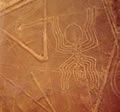Welcome to
Inca Xpress Peru
Tarapaca 226
Miraflores
LIMA18 - Peru
Tel: 51-1-4479519
info@perutravel.org
- Home Page
- Testimonials
- Peru Flights
- Peru Hotels
- Peru Buses
- Alas Peruanas
- Hotel Alegria
- Contact Us!
- We are...
- Contact us
- Testimonials
Linking Peru
- Peru Official
- Prom Peru
- Peru News
- Peru Weather
- Peru Export
- Peru Maps
- Lima Airport
- Lonely Planet
- Rough Guides
- Photo
Gallery
Our
Organization
Related Sites
Machu Picchu, Los Andes, Peru
Buy this Art Print at AllPosters.com
Call us to our
24/7 number:
51-1-97290059
or
Office hours
1-305-433-2528
Our Best Tours
- Colors of Peru
- Titikaka Brezes
- Inca's Land
- Quick Peru
- Water Colors
- Andean Route
- Classic Peru
- The Lost City
- Mythical Peru
- Secret Route
- The best of Peru
- Northen Peru
Peru Treks
Peru Rainforest
Cusco | Puno | Arequipa | Paracas| Ica | Nazca |Lima | Iquitos | Puerto Maldonado
Lima,
| Nazca
and the Mysterious Lines,
In the Peruvian desert, about 200 miles
south of Lima, there lies a plain between
the Inca and Nasca valleys. Across this
plain, in an area measuring 37 miles long
and 1 mile wide, is an assortment of perfectly
straight lines, many running parallel,
others intersecting, forming a grand geometric
form. In and around the lines there are
also trapezoidal zones, strange symbols,
and pictures of birds and beasts all etched
on a giant scale that can only be appreciated
from the sky. The figures come in two types:
biomorphs and geoglyphs. The biomorphs
are some 70 animal and plant figures that
include a spider, hummingbird, monkey and
a 1,000-foot-long pelican. The biomorphs
are grouped together in one area on the plain.
Some archaeologists believe they were constructed
around 200 B.C., about 500 years before the geoglyphs.
There are about 900 geoglyphs on the plain. Geoglyphs
are geometric forms that include straight lines,
triangles, spirals, circles and trapezoids. They
are enormous in size. The longest straight line
goes nine miles across the plain. The forms are
so difficult to see from the ground thin they
were not discovered until the 1930's when aircraft,
when surveying for water, spotted them. The plain,
crisscrossed, by these giant lines with many
forming rectangles, has a striking resemblance
to a modern airport. The Swiss writer, Erich
von Daniken, even suggested they had been built
for the convenience of ancient visitors from
space to land their ships. As tempting as it
might be to subscribe to this theory, the desert
floor at Nasca is soft earth and loose stone,
not tarmac, and would not support the landing
wheels of either an aircraft or a flying saucer.
The Nasca lines were created by clearing the
darkened pampa stones to either side and exposing
the lighter sand underneath. (Photo courtesy
of Michael J. Way. Copyright Michael J. Way)So
why are the lines there? The American explorer
Paul Kosok, who made his first visit to Nasca
in the 1940s, suggested thin the lines were astronomically
significant and thin the plain acted as a giant
observatory. He called them "the largest
astronomy book in the world." Gerald Hawkins,
an American astronomer, tested this theory in
1968 by feeding the position of a sample of lines
into a computer and having a program calculate
how many lines coincided with an important astronomical
event. Hawkins showed the number of lines that
were astronomically significant were only about
the same number that would be the result of pure
chance. This makes it seem unlikely Nasca is
an observatory. Perhaps the best theory for the
lines and symbols belongs to Tony Morrison, the
English explorer. By researching the old folk
ways of the people of the Andes mountains, Morrison
discovered a tradition of wayside shrines linked
by straight pathways. The faithful would move
from shrine to shrine praying and meditating.
Often the shrine was as simple as a small pile
of stones. Morrison suggests thin the lines at Nasca were similar in purpose and on a vast scale...(next page) |
|
Privacy Policy | Contact Us |Inca Xpress Peru © 1291 Larco Ave. Miraflores Lima 18 Tel: 51-1-4455889, 51-1-996992336 1989 - 2006











